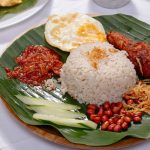By Edward Ong
Over 7 billion people live on this blue green ball. However, not all of us get to enjoy three square-meals a day.
According to various UN studies, 821 million people worldwide are at risk of malnutrition. While overall starvation figures have been steadily decreasing – and famines are becoming rarer – 821,000,000 is still very big.
Contrast this with the amount of food wasted every year. According to another report, over 1.3 billion tones are wasted every day. That’s roughly one third of the food produced for human consumption annually, enough to feed 3 billion people.
The food problem is pretty complicated and multi-layered. War, politics, natural disasters, the slowing economy, and greedy businesspeople – none of which can be solved at a human level.
All are too complex for this column and way over the comprehension level of this writer. Instead, let’s talk about a recent Malaysian innovation that helps reduce food wastage.
Objective
Growing up in a rural community an hour south of Kuala Lumpur, Zhafri Zainudin loved eating fruits. He also had a passion for digesting problems, and finding simple, everyday solutions.
One day, a friend – an owner of a stall selling tropical fruits – complained about the amount that gets spoiled before they could be sold. This was a common dilemma among fruit sellers. If the harvest is small, there won’t have enough to sell. Too much and they’ll worry if there are enough customers.
Now, let’s assume the Almighty always gives us just enough. That the planet is capable of producing enough food for every living being. The wheels in Zhafri’s head started turning. The gears moved into position. Like a Malaysian Isaac Newton, I like to think he sat beneath a durian tree when an idea dropped into his head.
Challenge
Bananas stay fresh until they ripen. After that, the bunch goes bad faster than wild monkeys can steal your kacang at the taman. Papayas stay fresh for up to five days at room temperature. Mangos up to eight days. 10 for watermelons.
Of course, fruits last a little longer if you place them in the fridge. If I can’t stop nature, Zhafri wondered, maybe I can slow it down.
Truth
Zhafri needed many kinds of fruits to test his methodologies. Fortunately, he was surrounded by friends and family who owned fruit trees and orchards. They often wondered if all these were a ruse to gain a free/discounted supply of fruits.
After much research and experimentation, Zhafri stumbled upon an all-natural substance that extended the life of fruits. The mixture contained specially sourced beeswax and other natural ingredients.
Together, it created a protective layer around the fruit to slow down the ripening process. Not by one or two days- but up to two whole weeks. Best of all, he didn’t need to soak the fruit. The compound just had to be placed on a small spot to affect the whole product.
Answer
Fruit stickers are common.
They tell customers where the fruits come from – and if it has numbers – whether the fruit is organic and how much it costs. However, about the only thing people want to know about fruit stickers is whether they’re edible.
Some stickers are made of edible paper, but it’s not a requirement. For US produce, the glue is FDA regulated. Should you eat the stickers? No. Will you die if you do? Also no. But you probably shouldn’t put this to the test. It’ll be weird for anyone to consume ginormous quantities of sticky paper.
Zhafri found that he could apply the solution on fruit stickers without comprising its quality and effectiveness. A small sticker kept a mango farm fresh for up to two weeks. Importantly, it (the mango) tastes just as good after the extended two weeks. The sticker also worked on a wide variety of fruits.
Therein lies the beauty of the idea: It didn’t need an extra step or require a large investment. It simply leveraged on an existing platform, improved what’s already in the market. What was once a mere branding media is now an agent to prolong the life of fruits. All that was left was to bring the technology to the world.
A chance encounter in Dubai changed everything. Together with Moody Soliman and Steve Hulteng, Stixfresh was born – fruit stickers that slowed down nature to speed up progress. As we speak, the team is in the midst of bringing this food-saving innovation to households everywhere.
Follow Stixfresh on Facebook or support its crowdfunding efforts on Indiegogo. Here’s to every living being having enough on their plate, every day.

Edward
Ong is on a quest to discover and create Malaysia’s best ideas.
He is an award-winning Writer and Creative Director, and can be found at
IdeasAreBorderless.com
You can read some of Ed’s previous articles here:
MARKETING Magazine is not responsible for the content of external sites.










Comments are closed.